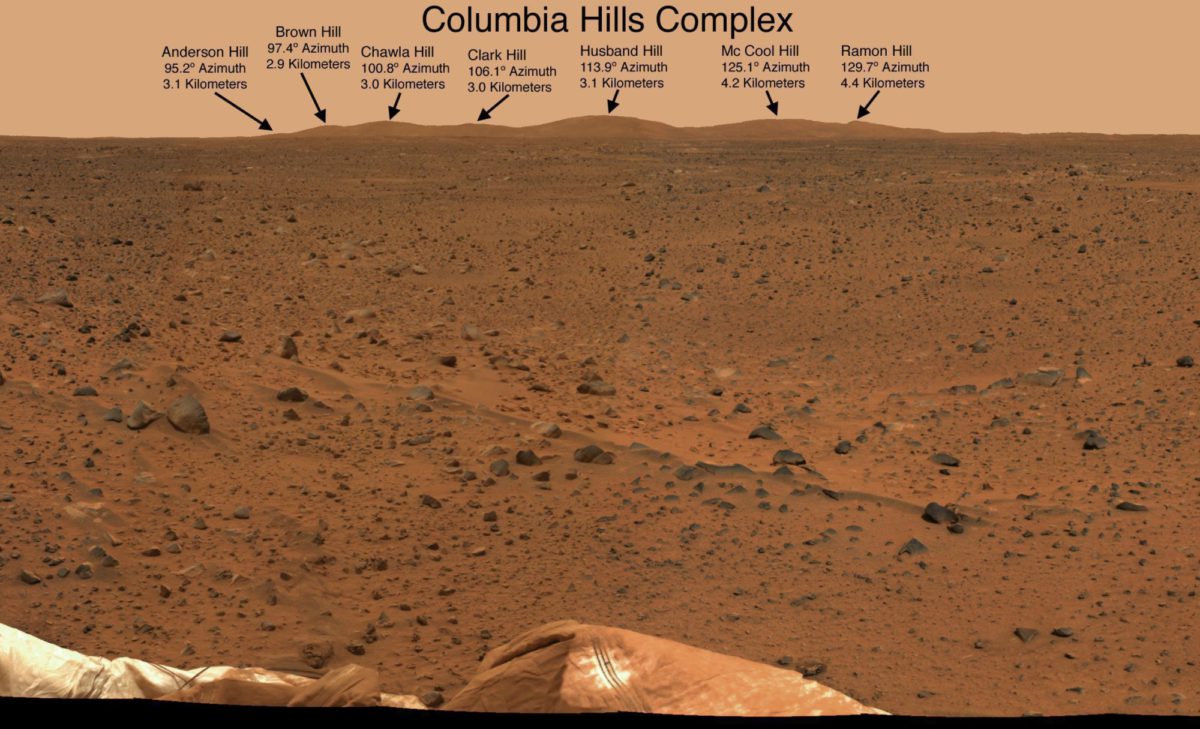Emily Lakdawalla • Feb 01, 2013
Columbia, ten years on
Today is a day of remembrance for NASA: the tenth anniversary of the loss of the space shuttle Columbia during its return to Earth. A year after that terrible day, the seven astronauts were honored in names of landmarks visible far away on the eastern horizon of the Mars Exploration Rover Spirit, which had landed on Mars only a month previously.

Naming landmarks after fallen heroes is something that people like do do, but I don't usually find much comfort in it. Having a constant reminder of the potential downside of our attempts to go beyond our limits makes us mindful of safety but it can also make us timid and prevent us from accepting risks that we need to take in order to do new things that we've never done before. That's why what Spirit did next was so wonderful. A year and a half later, Spirit's horizon was totally different. Because Spirit had climbed those hills. It wasn't something a Mars Exploration Rover had ever been expected to do -- but the mission tried, and then, they succeeded. That, I think, was a much more fitting tribute to the memories of people who died in the act of trying to expand our horizons.
I miss Spirit, too. Here's her view from the summit of Husband Hill. Her tracks point back toward her landing site, and her pole antenna points toward the Inner Basin and Home Plate, where she made discovery after discovery.

Support our core enterprises
Your support powers our mission to explore worlds, find life, and defend Earth. You make all the difference when you make a gift. Give today!
Donate

 Explore Worlds
Explore Worlds Find Life
Find Life Defend Earth
Defend Earth

